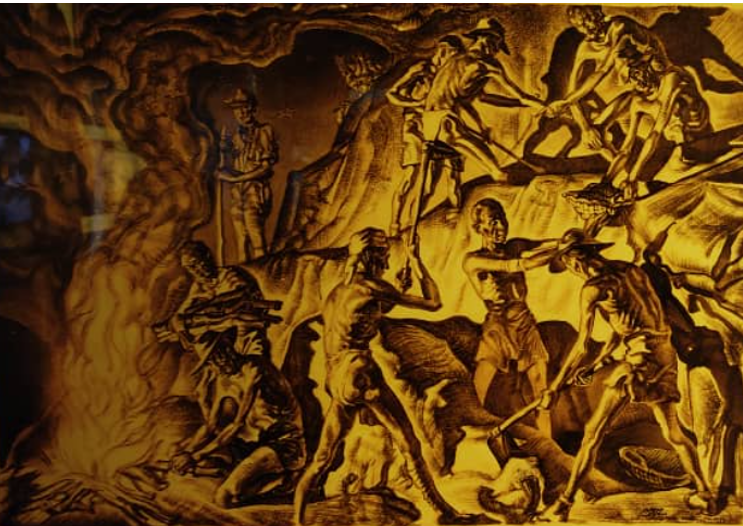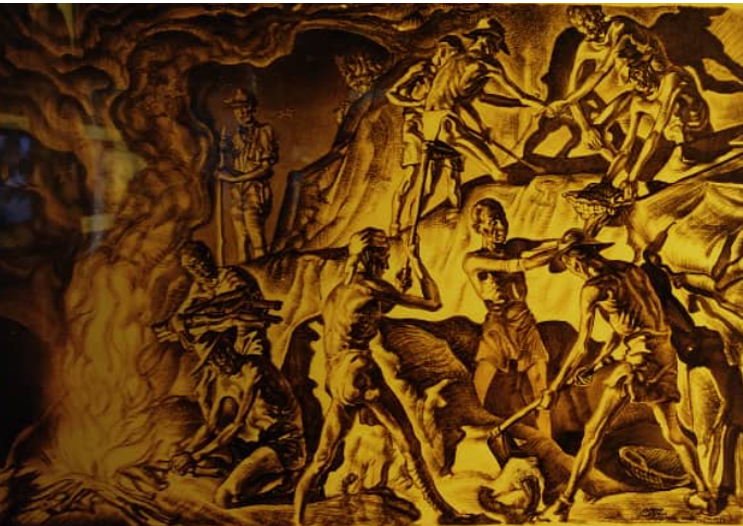HELLFIRE PASS INTERPRETIVE CENTRE, November 16 2023 -
Death Railway, also known by its aliases of Siam-Burma Railway, Burma Railway or Thai-Burma Railway has a grim past. It is a product of World War 2 (WW2), built between 1942 and 1943, stretching 415km in multi-terrain landscapes, connecting Bampong, Thailand to Thanbyuzayat, modern-day Myanmar (Burma). Its infrastructure was built on the blood, sweat and tears of labourers, who during the Japanese occupation, were falsely promised wages and good conditions, allied prisoners of war (POW) and the Romusha; Asian civilian labourers. The railway was built upon the manual labour of POW and the Romusha, under the eye of brutal guards.
Soon after the commencement of its building works, reports of abuse and neglect emerged among the people. Instead of bettering the conditions, or convincing the labour force, the Japanese chose to use brute force. Tens of thousands of Romusha are reported to have died from treatable conditions such as cholera and dysentery, while some died due to sheer exhaustion and malnutrition, while some succumbed to a more painful death; beatings. Shortly later, Hellfire Pass became synonymous with its original name, due to the post-sunset glow from fire as work continued, and the horrendous and shameful working and “living” conditions (Figure 1). Private Max McGee from the 2/3rd Machine Gun Battalion said:

Photo By SURUTHIMITRA OKPOLUAEFE
Quote from Private Max McGee from the 2/3rd Machine Gun Battalion
During the Speedo period, due to the heightening time constraints of winning the war, the working conditions worsened. This period is known for its enormous deprivation and suffering in the work camps. One survivor recounted working for 150 consecutive days, while another recounted working 18 to 20-hour shifts with the shifts extending to 23 hours for a period. Malnourished and weak prisoners are cited to sometimes be made to walk hundreds of kilometres to neighbouring camps before resuming work. Men who collapsed from the workload were beaten and forced to carry on. Treatment was also not given to the poor. Doctors had to pick and choose who would be given life-saving medicine to survive. Willpower sustained some, while others gave up and died. Towards the end of this period, people couldn’t predict who would survive and who wouldn’t. Half of the Romusha workforce died during this period.
Amidst outstanding calamity, the POW and the Romusha had an urge in them to try to revolt against their captors. Some placed termite nests near the support beams, some substituted soft wood for hard wood during the construction of the line, whilst some “accidentally’’ failed to sufficiently lower the support piles. Despite their best efforts, their desire to sabotage the Japanese was to no avail, as prisoners plagued by hunger and ill health had little to no energy to damage a line that they would be forced to repair again, and the presence of guards who enforced inhumane methods of discipline made the idea of defiance difficult. Albeit, some officers, particularly doctors, showed distinguished moral character, as they stood between guards and prisoners getting “disciplined” at great a personal risk. Some prisoners risked their lives documenting the events that went down in terms of pictures, drawings and diaries, as anyone in possession of such documentation would be liable to execution. Several Australians kept radios hidden in artificial legs, jam jars and even water bottles to maintain morale, risking death if caught. It is said that some prisoners tried to regain their freedom by fleeing the camps, but none succeeded, nevertheless.
After the end of WW2, about 14,000 Australian prisoners of the Japanese went home. Albeit, after living the horrors of war for such extended times, their peace and ability to be happy had been stripped of them. Imprisonment had unleashed an epidemic of post-traumatic stress disorder (PTSD), where returnees awaken screaming at night from their past horrors, some turned to substance abuse, violence, and also emotionally distanced themselves from their children. The former POWs were robbed of their individuality where they were not able to function outside of their homes, unable to resume their pre-war occupation. Disease had robbed some men of their sight, limbs, mental health, and bodily fitness. Some families lived a lifetime of sorrow after the death of a loved one in captivity, while survivors feared for their health whilst worrying that their lives have been unmeaningfully shortened by the brutality they had endured. Despite the end of the physical war, an internal war had taken its place.
Compassion was out of the question, as the Japanese deemed those who surrendered to have neither honour nor rights and were, therefore, slaves of the Emperor. Throughout this period, the building of the rail line had to be pushed regardless of the cost as a means to the end, discipline was enforced brutally, and beatings and other forms of vile punishments were common. To this author, the Death Railway/Hellfire Pass is a standing monument marking one of the lowest points in human history, where the divide between ‘us’ and ‘them’ was so potent that we failed to see each other as ONE, equal, and noble HUMAN RACE, lest another world war erupts.

Photo By HELLFIRE PASS INTERPRETIVE CENTRE/SURUTHIMITRA OKPOLUAEFE
Vile working conditions under which the allied prisoners of war and the Romusha were kept during the building of the Siam-Burma railway
SDG 4 - Ensure inclusive and equitable quality education and promote lifelong learning opportunities for all




